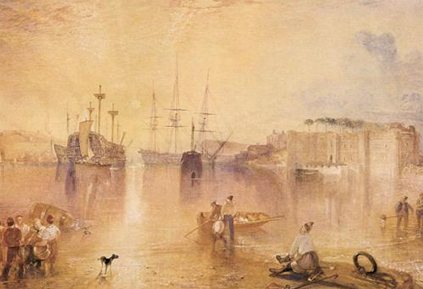Andrew Graham-Dixon on 'Ruskin and the English Watercolour' at the Whitworth Gallery in Manchester
'HAVE YOU not flattered him?' John Ruskin's doting parents asked George Richmond, when they saw his drawing of their 24-year-old son. 'No,' he replied, 'it is only the truth, lovingly told.' Richmond's portrait is one of the first images you come across in the Whitworth Gallery's fresh and compelling exhibition, 'Ruskin and the English Watercolour'. The young Ruskin gazes out with quiet intensity, hair swept back from a noble forehead, a half-smile frozen on his lips. On balance, the artist probably did flatter his subject; Richmond's son described Ruskin at around this time as a gaunt young man 'with a profusion of reddish hair' and 'shaggy eyebrows like to a scotch terrier'.
Richmond's Ruskin might be an idealisation, but if so it's a salutary one - a reminder that Ruskin was not always the slightly stuffy Victorian of his later years but was, also, the last of the great Romantics, who happened to write his poetry in the form of art criticism. When Richmond drew him, Ruskin was secretly writ-ing his remarkable, idiosyncratic defence of J M W Turner, the first volume of Modern Painters, with its virtu-ally biblical purple passages: 'Turner - glorious in conception - unfathomable in knowledge - solitary in power - with the elements waiting upon his will, and the night and the morning obedient to his call, sent as a prophet of God to reveal to men the mysteries of His universe, standing, like the great angel of the Apocalypse, clothed with a cloud, and with a rainbow upon his head, and with the sun and the stars given into his hand.'
'Ruskin and the English Watercolour' fascinates largely because it has you constantly scurrying back to Ruskin's texts....

The Last Romantic?
11-04-1989

